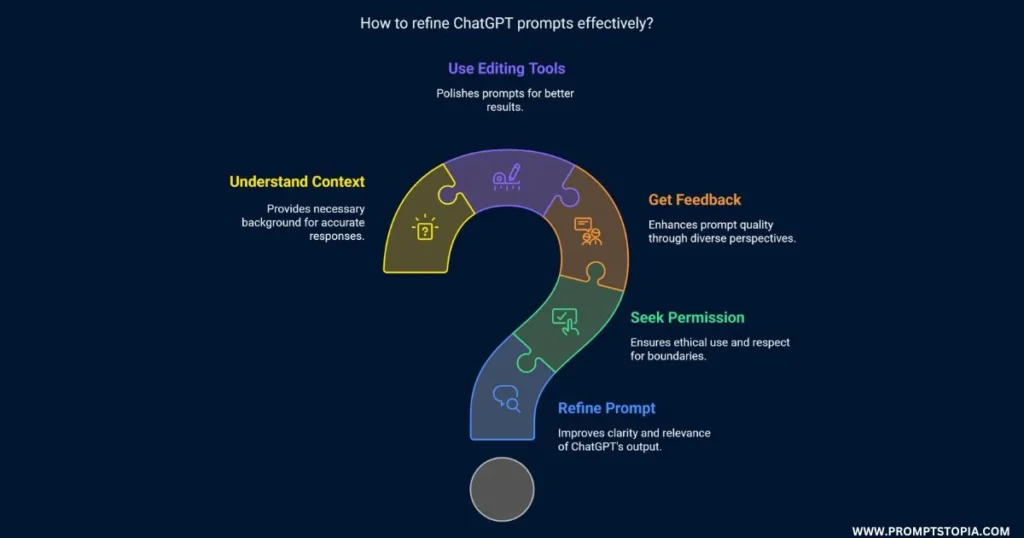You can tell something’s off when all AI responses start to sound the same.
Now stop and think when was the last time something AI wrote actually sounded like you?
Nowadays everyone relies on AI tools such as ChatGPT not (ChatGBT), DeepSeek and Grok for everything. From writing a simple business plan to creating a social media post people use AI in everything. It is because these tools work with astonishing speed and efficiency in creating the desired output but they also come with few problems, these AI models overuse certain words which makes your content sound repetitive and bland.
Writers, students and teachers often find AI generated content filled with same phrases which makes the content dull and predictable. This problem is easily noticeable in content creation and repetitive email writing where variety of words is important in order to keep readers engaged. A varying vocabulary makes writing feel natural and human written. Avoiding the list of words overused by AI helps improve clarity and originality.
Table of Contents
Understanding Overused Words in AI Writing
Overused words in AI generated content are terms that show up frequently which makes the writing feel unnatural and dull. This happens especially when you use Ai models such as ChatGPT and DeepSeek. Common examples include words like daunting, spark, ignite and critical. Using these words too often can make your content feel unnatural and robotic. By knowing which words are often overused by AI, you can replace them with something more specific and better alternatives.
This will make your writing more engaging and avoiding the list of overused words by AI can make your content more natural and fresher.
What is the Impact of the List of Overused Words by AI on SEO and Writing?
Repetitive language not only affects writing but it also affects how search engines rank it. Content that contains the same words lacks variety which makes it less engaging for readers and because of this it ranks lower in SEO. Google prioritizes content that feels natural and informative. When AI repeats the same phrases, the content may get flagged as low quality, which reduces its visibility.
In academic writing repeated words make the whole essay sound unoriginal which might affect grades. By reducing the list of words overused by AI helps improve content flow, making it more engaging for both readers and search engines.
What are the Strategies to Avoid the List of Overused Words by AI?
One easy way to avoid overused words is to use thesaurus. Whenever I saw ChatGPT using same words I will look the word in thesaurus to find the best suitable alternative of the word. For example, a phrase that ChatGPT often use is “compelling” instead of using this word, I can use words like intriguing or engaging using thesaurus has also improved my vocabulary a lot.

Refine Your Prompt
Refining the prompt can improve the AI accuracy and its wording and also has a big effect on the output generated. Blacklisting the words that seem repetitive will improve the overall result. Using prompt engineering frameworks along with blacklisting repetitive words can guide AI in generating a more varied and natural language.
Editing your prompt is one of the most important aspects, instead of entirely relying on the AI review the text in order to replace overused words with more specific alternatives. You can improve the readability by avoiding the words that are overused by AI.
Example;
“You are an experienced content writer and your task is to write 350-word essay on influencer marketing. You are banned from using the following words “utilizing, daunting, fostering, variety, hurdles, delve, in today’s fast paced world, streamline, overwhelmed, elevate, alleviate and realm.”
Avoiding the list of words that are overused by AI help in generating original and human-like content.
Ask ChatGPT to Take Permission
Practicing writing exercises is a very good way to avoid overused words. one effective way to improve quality of response is to include a step in which ChatGPT asks for your permission before generating the next section. This will help you to review content in small parts, which makes it easier to spot overused words and make corrections.
If there are any words that, I dislike I can ask ChatGPT to rewrite that section and remove those words. for example if a section contains words like compelling or hustle and bustle you can ask ChatGPT to rewrite the part before continuing ahead. This particular method is very helpful to students and small business owners who want clear and professional response.
Example:
“As a content creator, your task is to give a detailed explanation on the following (topic). Some words that you are banned to use are “digital era, hustle, folks, compelling, spark, ignite, robust, vibrant, unleash and today world”. After writing each section you need to ask for my permission before writing the next section.”
Seek Peer Feedback
Getting a second opinion greatly improves writing when you write something there is a repetition of words that you might not notice but other’s will. I sometimes share my work with friends and colleagues and ask them to point out repetitive words.
Example: Once a friend pointed out that I used the word “compelling” a lot. This helped me in identifying the overused words and replace them with better words that are much more engaging.
Use Editing Tools
Tools such as Grammarly and ProWritingAid will also assist you in identifying and preventing overused words. These tools analyze sentence flow and vocabulary which greatly helps you in refining your content.
For example, if Grammarly detects that you have used the word “great” too many times, it will provide suggestions like “excellent,” “superb,” or “remarkable.” This makes your writing more varied and professional.
Understand Context
Choosing the right words depends on the type of audience. Therefore, choosing the right words is very important for clear writing. One way to improve AI generated content is to specify a specific role for ChatGPT.
Example: “Act as an expert content writer who is very experienced and have authored hundreds of books.”
This will help in specifying the context to generate more relevant and effective response.
LIST OF WORDS OVERUSED BY AI
Writing produced by AI uses the same vocabulary, which makes it seem robotic and predictable. Using the same set of words over and over again can signal your readers that you are using ChatGPT or another AI tool. The list of overused AI terms that are commonly used in academic, professional, and creative writing is provided below.
Here are some common overused words that are used by AI:
- Raise fairness concerns
- Foster a culture of
- Represents a significant milestone in the field
- It discovered an intriguing approach
- Based on the information provided
- At the forefront of
- Mind-boggling figure
- Significantly
- It remains to be seen
- Future might see us placing
- Seeking trustworthiness
- Navigating the [landscape]
- Consequently
- Remember that
- Exploring new frontiers
- Remarkable tool
- Latest offering
- Let’s uncover
- Let’s delve in
- Given the fact that
- Due to the fact that
- Raise intriguing questions
- Embark on a journey
- Unleash the power of
- Represent a major milestone
- One step closer
- Lay the groundwork for
- Unlock the potential of
- It is worth noting
- Important to consider
- Effortless
- In light of the fact that
- One thing is clear
- Let’s delve into the exciting details
- Exploring this avenue
- Smooth
- Make informed decisions
- Paving the way for enhanced performance
- More robust evaluation
- Have come a long way in recent years
- Potentially revolutionizing the way
- Navigating the complexities
- Vibrant
- Capitalize on the opportunities
- Delving into the intricacies of
- Comprehensive
- Remarkable success
- Seamless
- Implications are profound
- Push the boundaries of
- Risks of drawing unsupported conclusions
- In terms of
- The possibilities are endless
- Pivotal
- Improved efficiency in countless ways
- In the fast-paced world
- Bridging the gap between
- It serves as a stepping stone towards the realization
- A testament to
- Let’s delve into the details
- Foster the development
- Main message to take away
- Spearhead the initiative
- Latest breakthrough signifies
- Remarkable proficiency
- Remarkable abilities
- A gateway to
- Can vary depending on what
- In conclusion
- It is crucial to understand
- It’s worth mentioning that
- It’s important to note that
- Accordingly
- However
- Therefore
- Thus
- Moreover
- Subsequently
- Additionally
- As a matter of fact
- Notably
- Easy
- Mark a significant step forward
- It is essential to consider
- Tapestry
- Pave the way for
- Remarkable breakthrough
- Possibilities are endless
- Opens up exciting possibilities
- Indeed
- Remarkable abilities
- It is generally considered impolite
- Holds promise
- It is important to know
- Groundbreaking way
- Spearhead the initiative
- You may want to check
- It’s worth mentioning that
- Bridging the gap between
- Due to the fact that
- Agile
- AI-powered
- Alternative
- Although
- Arguably
- As a professional
- As well as
- At the end of the day
- Benchmark
- Best-in-class
- Best practices
- Big data
- Bleeding edge
- Bottom line
- Bustling
- Bustling metropolis
- Circle back
- Complexities
- Consequently
- Core competency
- Crucial
- Crucible
- Customer-centric
- Customer engagement
- Customer feedback
- Customer journey
- Cutting-edge
- Dance
- Data-driven
- Deep dive
- Deliverables
- Designed to enhance
- Despite
- Digital transformation
- Disruptive innovation
- Disruptive technology
- Dive into
- Due to
- Drill down
- Dynamic shift
- Enable
- Emphasize
- End-to-end
- Enhance
- Ensure
- Enigma
- Essentially
- Ever-evolving
- Everchanging
- Even if
- Even though
- Excels
- Fancy
- First and foremost
- Firstly
- Folks
- Foster
- Furthermore
- Future-proof
- Game changer
- Given that
- Gossamer
- Greenfield
- Gray area
- High-impact
- Holistic approach
- Horizon
- However
- Hustle and bustle
- Imagine
- Impactful
- Importantly
- Implications are profound
- In conclusion
- In contrast
- In order to
- In real-time
- In summary
- In today’s digital age
- In today’s digital era
- Indelible
- Indeed
- Innovative solutions
- It depends on
- It is advisable
- It is crucial to understand
- It’s important to note
- It’s worth mentioning that
- Keen
- Key performance indicators
- Key stakeholders
- Key takeaway
- Labyrinth
- Labyrinthine
- Landscape
- Leading edge
- Leverage
- Leverage resources
- Low-hanging fruit
- Make a difference
- Metamorphosis
- Meticulous
- Mission-critical
- Moist
- Moreover
- Moving forward
- Nonetheless
- Notably
- Next-gen
- On the horizon
- On the other hand
- Onboarding
- One-stop shop
- Out of the box
- Out-of-the-box thinking
- Overwrite
- Pain points
- Paradigm shift
- Paramount
- Performance metrics
- Pesky
- Pivotal
- Power
- Promptly
- Pushing boundaries
- Quick and easy
- Quick wins
- Raise fairness concerns
- Reach out
- Real-world application
- Realm
- Reasoning
- Redefining success
- Refined
- Remarkable abilities
- Remarkable success
- Remnant
- Revolutionize
- Robust
- Robust infrastructure
- Run it up the flagpole
- Scalability
- Seamless experience
- Seamless integration
- Significant step forward
- Significant strides
- Similarities
- Sights unseen
- Simplicity
- Smart solutions
- Soul
- Sounds unheard
- State-of-the-art
- Strategic alignment
- Streamline processes
- Subsequently
- Sure
- Sustained impact
- Symphony
- Synergy
- Take it to the next level
- Target audience
- That being said
- The necessity of clear understanding
- Therefore
- There is still room for improvement
- Thought leader
- Thought leadership
- To consider
- To put it simply
- To summarize
- Touch base
- Transformative
- Ultimate outcome
- Ultimately
- Understanding
- Understanding of the capabilities
- Underscores
- Uncover hidden trends
- Unleashing the potential
- Unlocking the power
- Unless
- User experience
- User-friendly
- User journey
- Value proposition
- Value-add
- Vital
- We can improve understanding and decision-making
- Welcome your thoughts
- What sets this apart
- When it comes to
- While
- Whispering
- Win-win
- With the introduction
- You could consider
- You may want to
- Your perspective
- Your take on this
- Smart goals
- Goal setting
- Results-oriented
- Outcome-focused
- Data insights
- Actionable insights
- Predictive analytics
- Prescriptive analytics
- Descriptive analytics
- Data analytics
- Insightful
- Key insights
- Analytics-driven
- Proactive approach
- Reactive approach
- Real-time data
- Data visualization
- Data storytelling
- Storytelling
- Narrative
- Content strategy
- Content marketing
- Content creation
- Engaging content
- Viral content
- Content curation
- Digital content
- Branded content
- Marketing campaign
- Digital marketing
- Online marketing
- Social media marketing
- Marketing strategy
- Growth hacking
- Customer acquisition
- Customer retention
- Customer loyalty
- Customer satisfaction
- Customer support
- Customer success
- Product roadmap
- Product lifecycle
- Product development
- Product management
- Product innovation
- Innovative product
- New product
- Product launch
- Market research
- Competitive analysis
- SWOT analysis
- Brand awareness
- Brand loyalty
- Brand equity
- Brand recognition
- Brand positioning
- Brand strategy
- Brand voice
- Brand messaging
- Visual identity
- Corporate identity
- Brand guidelines
- Rebranding
- Brand refresh
- Brand consistency
- Brand differentiation
- Brand promise
- Customer persona
- Target market
- Market segmentation
- Niche market
- Competitive advantage
- Value chain
- Customer value
- Brand advocate
- Brand ambassador
- Thought leadership
- Market trends
- Industry trends
- Trend analysis
- Market dynamics
- Consumer behavior
- Buying behavior
- Purchase decision
- Sales funnel
- Conversion funnel
- Lead generation
- Lead nurturing
- Sales cycle
- Sales pipeline
- Sales strategy
- Sales tactics
- Sales enablement
- Account management
- Key accounts
- Business development
- Strategic partnerships
- Partner ecosystem
- Channel strategy
- Distribution channel
- Sales forecast
- Revenue growth
- Revenue stream
- Profit margins
- Cost structure
- Financial performance
- Return on investment
- Cost-benefit analysis
- Break-even analysis
- Financial metrics
- Financial projections
- Cash flow
- Profit and loss
- Balance sheet
- Budgeting
- Financial planning
- Risk management
- Risk assessment
- Risk mitigation
- Business continuity
- Contingency planning
- Crisis management
- Corporate governance
- Compliance
- Regulatory compliance
- Ethical standards
- Corporate responsibility
- Sustainability
- Environmental impact
- Social impact
- Corporate citizenship
- Corporate culture
- Employee engagement
- Talent management
- Workforce development
- Employee retention
- Employee satisfaction
- Workplace culture
- Diversity and inclusion
- Human capital
- Leadership development
- Management training
- Professional development
- Performance appraisal
- Performance management
- Succession planning
- Organizational development
- Change management
- Organizational effectiveness
- Strategic planning
- Strategic goals
- Business strategy
- Operational strategy
- Competitive strategy
- Growth strategy
- Digital strategy
- Innovation strategy
- Technology strategy
- IT strategy
- Cybersecurity
- Data privacy
- Information security
- IT governance
- Digital transformation
- Technology adoption
- Emerging technologies
- Artificial intelligence
- Machine learning
- Internet of Things
- Blockchain
- Big data
- Data science
- Data management
- Cloud computing
- Cloud infrastructure
- Software as a Service
- Platform as a Service
- Infrastructure as a Service
- IT services
- Managed services
- IT support
- IT operations
- IT infrastructure
- Network security
- Cyber threat
- Cyber attack
- Data breach
- Incident response
- Business intelligence
- Data warehousing
- Data mining
- Analytics
- Predictive modeling
- Business analytics
- Descriptive analytics
- Prescriptive analytics
- Data governance
- Data quality
- Data integration
- Data storytelling
Wrapping Up
AI tools are helpful, but they often rely on a limited set of words, which makes your content sound more repetitive and less human. With the help of the thesaurus, refining your prompts, and practicing writing exercises, you can improve your writing significantly and create content that is both unique and engaging to the readers.








